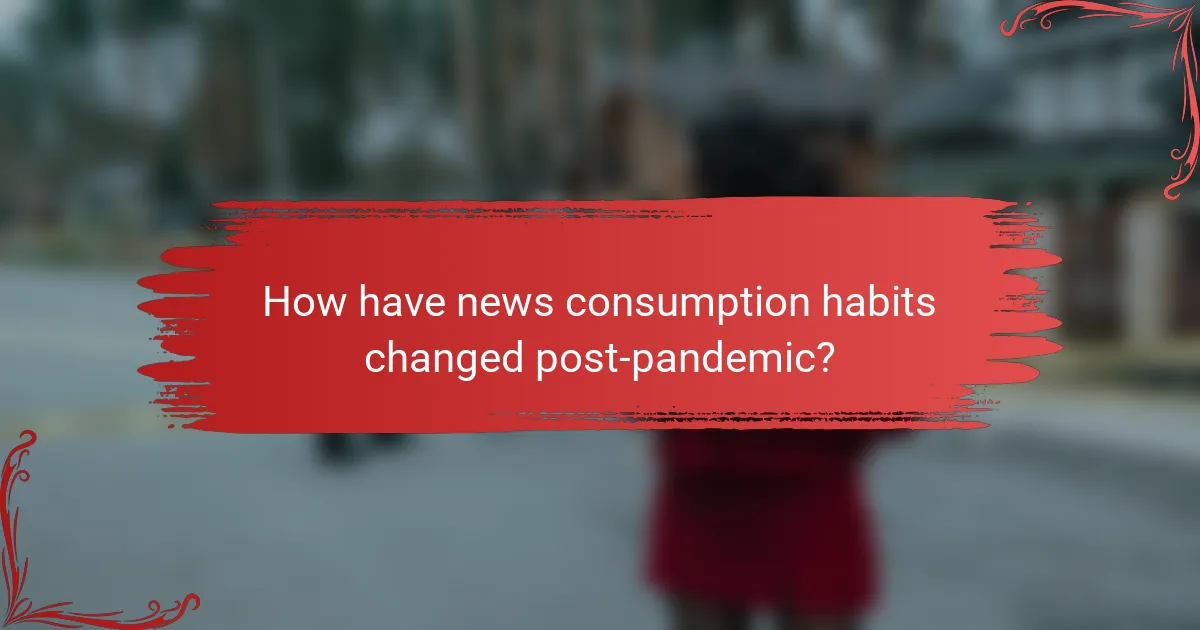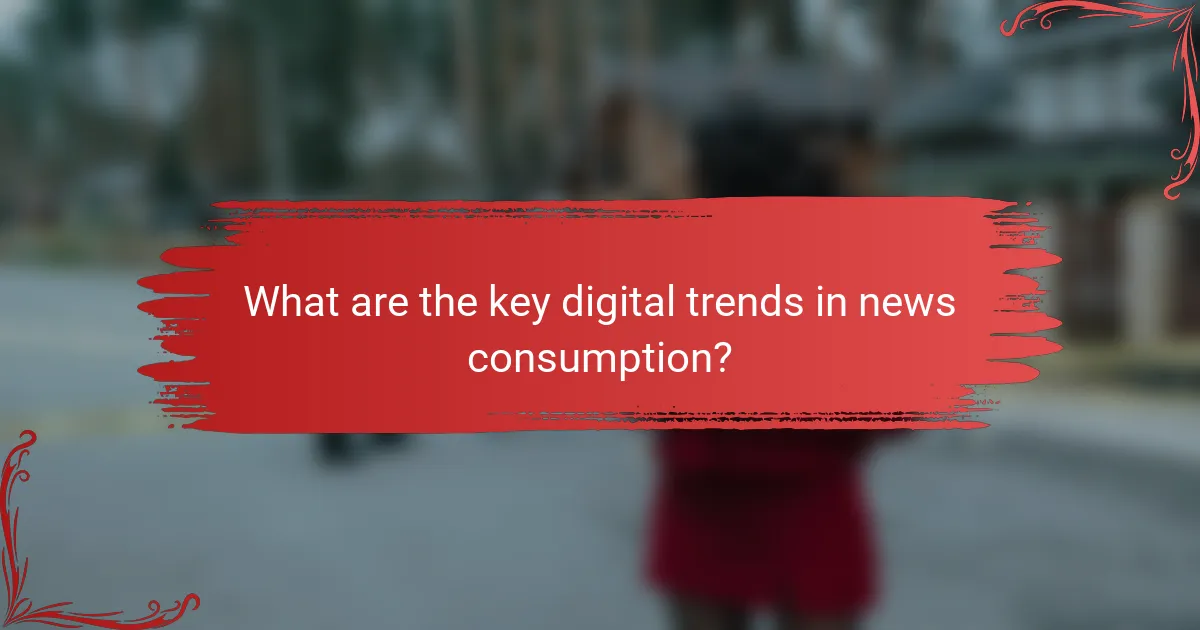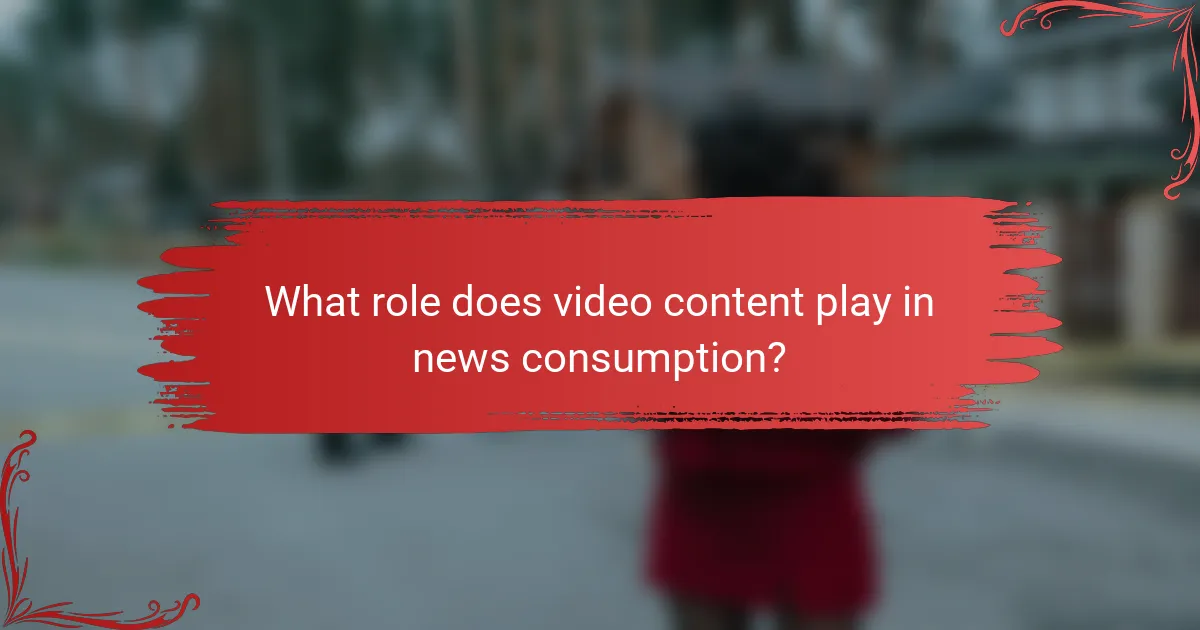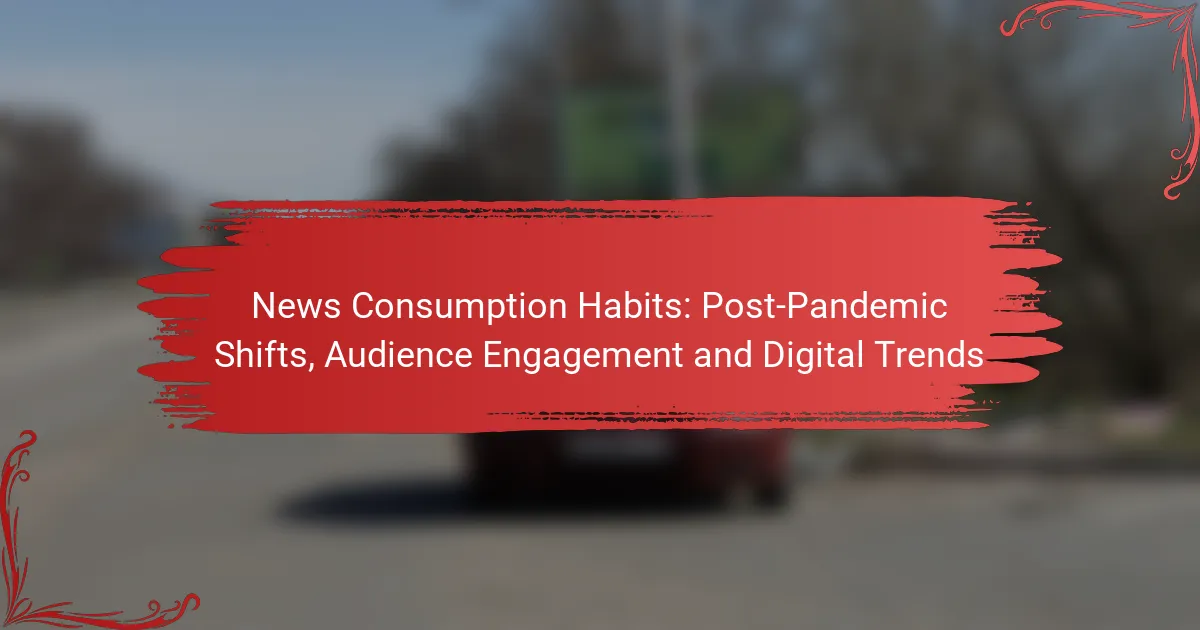In the wake of the pandemic, news consumption habits have evolved dramatically, with a notable shift towards digital platforms and a preference for succinct content. Audiences are increasingly selective about their news sources, favoring those that provide quick and accessible updates, while trends such as mobile news apps and personalized feeds are reshaping the landscape of information delivery.

How have news consumption habits changed post-pandemic?
Post-pandemic, news consumption habits have significantly shifted, with a marked increase in digital engagement and a preference for concise content. Audiences are now more selective about their news sources, often gravitating towards platforms that offer quick, accessible updates.
Increased reliance on digital platforms
The pandemic accelerated the transition from traditional media to digital platforms for news consumption. Many individuals now access news primarily through smartphones, tablets, and social media, leading to a decline in print subscriptions and broadcast viewership.
Digital platforms provide immediacy and convenience, allowing users to stay informed with real-time updates. This shift has prompted news organizations to enhance their online presence and invest in mobile-friendly formats.
Shift towards short-form content
There is a growing preference for short-form content as audiences seek quick, digestible news updates. Articles, videos, and social media posts that summarize key points in a few sentences or seconds are becoming increasingly popular.
This trend reflects a broader change in attention spans, with many consumers favoring bite-sized information over lengthy articles. News outlets are adapting by creating more engaging, concise formats that cater to this demand.
Rise in subscription-based models
As advertising revenue declines, many news organizations are turning to subscription-based models to sustain their operations. This approach allows them to offer premium content directly to consumers, fostering a more loyal audience base.
Subscriptions can vary widely, with some outlets offering tiered pricing for different levels of access. Consumers are often willing to pay for quality journalism, especially when it comes from trusted sources that provide in-depth analysis and exclusive reports.

What are the key digital trends in news consumption?
Key digital trends in news consumption include the increasing use of mobile news apps, the rise of social media as primary news sources, and the emergence of personalized news feeds. These trends reflect a shift towards more accessible and tailored news experiences for audiences.
Growth of mobile news apps
Mobile news apps have seen significant growth as users prefer accessing news on their smartphones. These apps offer convenience, allowing users to stay informed on-the-go and receive real-time updates. Popular apps often feature notifications for breaking news, making it easier for users to engage with current events.
Many news organizations have developed their own apps to provide a streamlined experience, often integrating multimedia content like videos and podcasts. Users should consider downloading apps from reputable sources to ensure they receive accurate and timely information.
Popularity of social media as news sources
Social media platforms have become major sources of news, with many users relying on them for updates. Platforms like Twitter and Facebook allow for rapid dissemination of information, often before traditional news outlets can report. However, this shift raises concerns about the accuracy and reliability of news shared on these platforms.
To navigate social media news effectively, users should verify information through trusted news sources and be cautious of sensational headlines. Engaging with diverse viewpoints can also enhance understanding of complex issues.
Emergence of personalized news feeds
Personalized news feeds are increasingly popular, as algorithms curate content based on user preferences and behaviors. This customization allows users to see news that aligns with their interests, enhancing engagement. However, it can also lead to echo chambers, where users are exposed only to viewpoints that reinforce their beliefs.
To benefit from personalized feeds while avoiding bias, users should actively seek out diverse sources and topics. Regularly adjusting preferences and following a variety of news outlets can help maintain a well-rounded perspective on current events.

How does audience engagement vary across demographics?
Audience engagement significantly differs across demographics, influenced by factors such as age, technology use, and content preferences. Understanding these variations helps media outlets tailor their strategies to effectively reach and engage different groups.
Millennials prefer interactive content
Millennials are drawn to interactive content, such as polls, quizzes, and live streams, which allow them to participate actively rather than passively consume information. This generation values engagement and often seeks out platforms that offer two-way communication, such as social media and interactive articles.
To effectively engage Millennials, media organizations should incorporate features that encourage participation, like comment sections or user-generated content. Utilizing platforms like Instagram or TikTok can also enhance interaction, as these channels support dynamic content sharing.
Older audiences favor traditional formats
Older audiences typically show a preference for traditional media formats, such as television news and printed newspapers. This demographic often values in-depth reporting and familiar presentation styles, which they associate with credibility and trustworthiness.
To cater to older viewers, media outlets should focus on delivering comprehensive news segments and maintaining a consistent publishing schedule. Offering content in familiar formats, such as newsletters or radio broadcasts, can also help retain this audience’s attention and loyalty.

What are the challenges in audience engagement?
Audience engagement faces several challenges, particularly in the context of misinformation and maintaining user trust. As news consumption evolves, understanding these obstacles is crucial for media outlets aiming to connect effectively with their audiences.
Combatting misinformation
Misinformation poses a significant barrier to audience engagement, as false narratives can spread rapidly across digital platforms. News organizations must implement robust fact-checking processes and promote media literacy among their audiences to counteract this issue.
Utilizing clear labeling for verified information and providing sources can help audiences discern credible news from misleading content. Regularly updating audiences about misinformation trends can also enhance their ability to critically evaluate news sources.
Maintaining user trust
Trust is essential for effective audience engagement, and it can be easily eroded by perceived biases or inaccuracies. To maintain user trust, news outlets should prioritize transparency in their reporting processes and openly address any errors or corrections.
Engaging with audiences through interactive platforms, such as social media, can foster a sense of community and accountability. Additionally, showcasing diverse perspectives and ensuring balanced reporting can help reinforce trust among various audience segments.

How can news organizations enhance audience engagement?
News organizations can enhance audience engagement by leveraging technology and fostering community connections. By understanding audience preferences and behaviors, they can tailor content and initiatives that resonate with their readers.
Utilizing data analytics for content strategy
Data analytics plays a crucial role in shaping a news organization’s content strategy. By analyzing user behavior, preferences, and engagement metrics, organizations can identify which topics resonate most with their audience. This data-driven approach allows for more targeted content creation, ensuring that articles and reports align with audience interests.
For effective implementation, news organizations should regularly track key performance indicators (KPIs) such as page views, time spent on articles, and social media shares. Tools like Google Analytics or specialized media analytics platforms can provide insights into audience demographics and content performance, guiding editorial decisions.
Implementing community-driven initiatives
Community-driven initiatives foster a sense of belonging and loyalty among readers. News organizations can engage their audience by creating platforms for user-generated content, such as opinion pieces or local news submissions. This not only diversifies content but also encourages active participation from the community.
Additionally, hosting events, webinars, or discussion forums can strengthen connections with the audience. These initiatives allow readers to voice their opinions and concerns, making them feel valued and heard. Regularly soliciting feedback through surveys or social media can further enhance these community ties and inform future content strategies.

What are the implications of digital trends on advertising?
Digital trends significantly reshape advertising by enhancing targeting capabilities and optimizing ad placements. Advertisers must adapt to these changes to effectively reach their audiences and maximize return on investment.
Shift towards programmatic advertising
Programmatic advertising automates the buying and selling of ad space, allowing for real-time bidding and more efficient ad placements. This shift enables advertisers to reach specific audiences at scale, reducing wasted spend on irrelevant impressions.
For example, programmatic platforms can analyze user behavior and demographics to serve ads that are more likely to resonate with potential customers. As a result, businesses often see improved engagement rates and conversion metrics.
Increased focus on targeted campaigns
Targeted campaigns leverage data analytics to deliver personalized ads to specific audience segments. This approach increases the relevance of advertisements, leading to higher engagement and better overall performance.
Advertisers should consider utilizing customer data from various sources, such as social media and website analytics, to refine their targeting strategies. Common pitfalls include over-segmentation, which can limit reach, and neglecting privacy regulations, such as GDPR in Europe.

What role does video content play in news consumption?
Video content has become a crucial element in news consumption, enhancing audience engagement and retention. It provides a dynamic way to present information, making complex stories more accessible and appealing to viewers.
Higher engagement rates with video news
Video news typically sees higher engagement rates compared to text-based articles. Viewers are more likely to watch a video than read a lengthy article, leading to increased shares and interactions on social media platforms.
Studies suggest that video content can boost audience retention by keeping viewers engaged for longer periods. For instance, news segments that incorporate visuals and storytelling elements can capture attention more effectively, often resulting in view durations that are several times longer than those for written content.
To maximize engagement, news organizations should focus on producing high-quality, concise videos that convey key messages quickly. Incorporating elements like subtitles and engaging thumbnails can further enhance viewer interest and accessibility.
